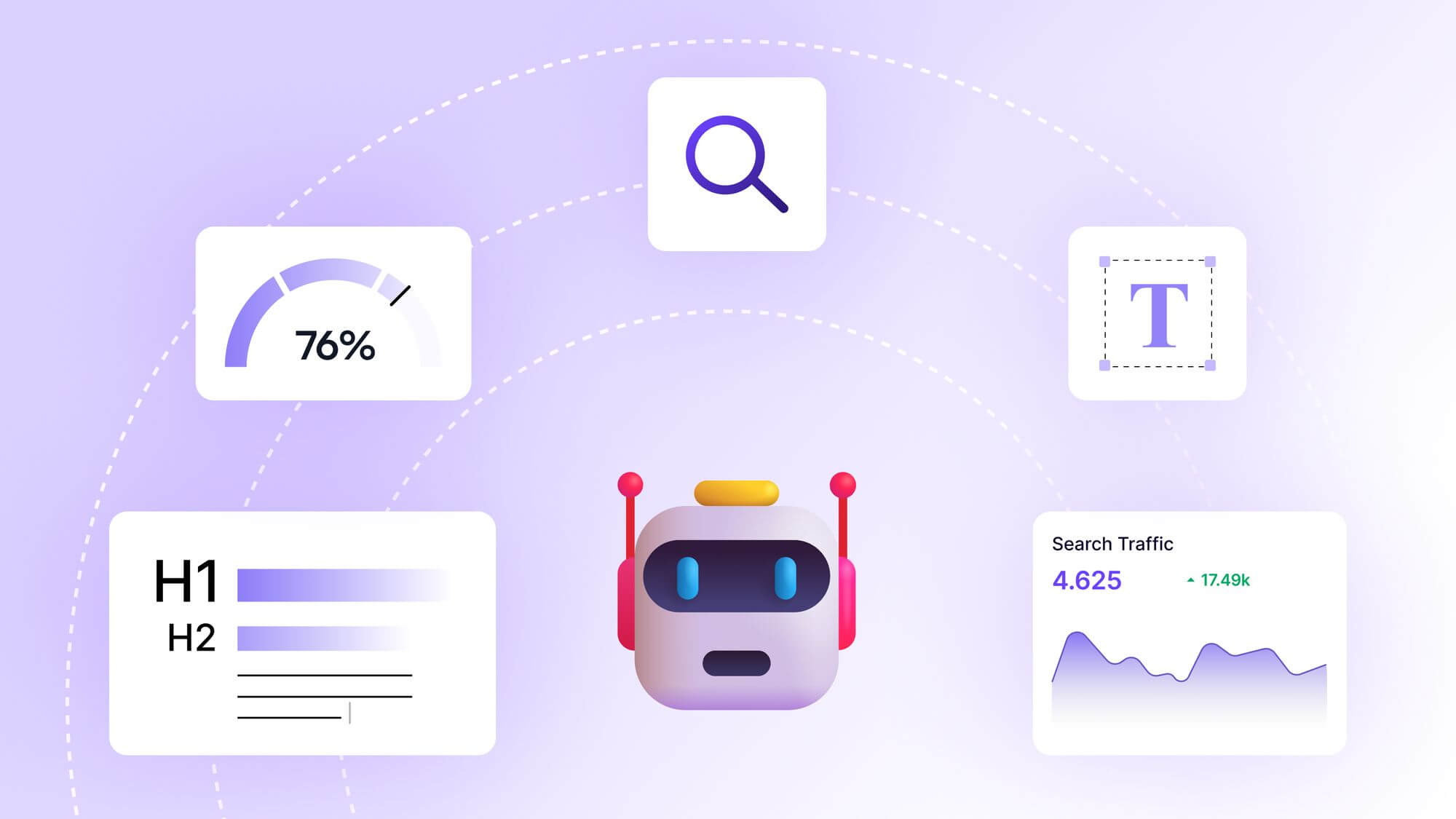
How to Generate SEO-Friendly Meta Descriptions Online: A Comprehensive Guide

How to Generate SEO-Friendly Meta Descriptions Online: A Comprehensive Guide
Imagine you’re strolling through a bustling digital marketplace, where every website is a vibrant stall vying for your attention. Amid the noise, a well-crafted meta description is like a shopkeeper’s warm, inviting pitch that draws you in. It’s a small but mighty tool in the world of search engine optimization (SEO), and mastering it can transform your website’s visibility. In this guide, we’ll dive deep into the art and science of generating SEO-friendly meta descriptions online, sharing practical tips, expert insights, and a sprinkle of storytelling to make the journey engaging.
I remember the first time I tried optimizing a blog post for search engines. I was a novice blogger, pouring my heart into content but wondering why my posts weren’t getting clicks. Then, I stumbled upon the magic of meta descriptions—those short snippets that appear under your page title in search results. By tweaking them, I saw my click-through rates soar. Let’s explore how you can harness this power using online tools and strategies to craft meta descriptions that captivate and convert.
What Is a Meta Description, and Why Does It Matter?
A meta description is a brief HTML tag, typically 150–160 characters long, that summarizes a webpage’s content. It appears in search engine results pages (SERPs) beneath the title tag, giving users a sneak peek into what they’ll find if they click. Think of it as a movie trailer: it needs to be compelling enough to spark curiosity without giving away the whole plot.
Why does it matter? While meta descriptions don’t directly influence search engine rankings, they play a pivotal role in click-through rates (CTR). A well-crafted meta description can entice users to choose your page over others, boosting organic traffic. According to Moz, a strong meta description can improve CTR by making your page stand out in a sea of search results.
The Anatomy of an SEO-Friendly Meta Description
Crafting an SEO-friendly meta description is like writing a tweet that sells. It’s concise, targeted, and persuasive. Here’s what makes a meta description effective:
First, it must be relevant. Your description should accurately reflect the page’s content to avoid misleading visitors, which can increase bounce rates. Next, it should include primary keywords to signal relevance to search engines like Google. Finally, it needs a call-to-action (CTA) to nudge users toward clicking, such as “Discover how,” “Learn more,” or “Get started.”
Let’s say you run a travel blog, and your post is about “Top 10 Beaches in Bali.” A generic meta description like “Learn about beaches in Bali” won’t cut it. Instead, try: “Explore the top 10 beaches in Bali for your next vacation! Find stunning views, tips, and more.” This version is specific, keyword-rich, and inviting.
Using Online Tools to Generate Meta Descriptions
The good news? You don’t need to be an SEO wizard to write great meta descriptions. Online tools can simplify the process, saving time and ensuring optimization. Let’s explore some popular options and how they work.
One standout tool is Yoast SEO, a WordPress plugin that offers real-time feedback on your meta descriptions. When I first used Yoast, I was amazed at how it flagged overly long descriptions or missing keywords, helping me refine my snippets. Yoast’s free version lets you input a meta description and checks its length and keyword usage, while the premium version offers advanced suggestions.
Another fantastic tool is SEMRush’s Writing Assistant. This platform analyzes your meta description for readability, tone, and SEO performance. It’s like having a digital editor whispering tips in your ear. For example, SEMRush might suggest swapping a vague phrase like “good content” for something specific like “expert travel tips.”
For those who prefer standalone tools, Ahrefs’ Free SEO Tools include a meta description generator that suggests snippets based on your keywords and content. These tools are lifesavers for busy bloggers or small business owners juggling multiple tasks.
Best Practices for Writing Meta Descriptions
While tools are helpful, the human touch is what makes a meta description shine. Here are some best practices to keep in mind:
Keep it concise. Google typically truncates meta descriptions after 160 characters, so aim for 150–160 to be safe. Use a tool like Character Count Online to check your length as you write.
Incorporate keywords strategically. If your page targets “vegan recipes,” include that phrase naturally in the description. For instance, “Find delicious vegan recipes for every meal! Easy, healthy dishes await.”
Add a compelling CTA. Phrases like “Shop now,” “Read more,” or “Start your journey” create urgency. When I added CTAs to my blog’s meta descriptions, I noticed a 15% increase in clicks within a month.
Make it unique. Each page on your site should have a distinct meta description to avoid duplicate content issues. Google frowns upon repetitive descriptions, as noted in their Webmaster Guidelines.
Finally, appeal to emotions. A meta description for a pet adoption page might read, “Find your furry best friend today! Meet adorable pets waiting for a loving home.” This tugs at heartstrings while being clear and actionable.
Common Mistakes to Avoid
Even seasoned marketers can slip up when writing meta descriptions. One mistake I made early on was keyword stuffing—cramming too many keywords into a tiny space, making it read like a robot wrote it. For example, “Best SEO tips, SEO strategies, SEO tools, SEO guide” is spammy and unappealing. Instead, focus on natural language.
Another pitfall is writing vague descriptions. A meta description like “All about marketing” doesn’t tell users what to expect. Be specific: “Learn proven marketing strategies to boost your brand in 2025.”
Lastly, don’t ignore mobile users. Since over half of web traffic comes from mobile devices, according to Statista, ensure your meta description looks good on smaller screens. Test it using Google’s Mobile-Friendly Test.
Leveraging AI for Meta Descriptions
Artificial intelligence is revolutionizing SEO, and meta descriptions are no exception. Tools like Jasper AI or Copy.ai can generate meta descriptions in seconds. Simply input your page’s focus keyword and a brief content summary, and these tools spit out polished snippets. I’ve used Jasper to brainstorm ideas when I’m stuck, and it’s like having a creative partner on speed dial.
However, AI isn’t perfect. It might produce generic or overly salesy descriptions. Always review and tweak AI-generated content to match your brand’s voice. For instance, if your brand is quirky, add some humor to the description to make it feel authentic.
Testing and Optimizing Your Meta Descriptions
Writing a meta description isn’t a one-and-done task. To maximize impact, you need to test and refine them. Tools like Google Search Console show you your pages’ CTR, helping you identify which meta descriptions need work. If a page has a low CTR, try rewriting the description with a stronger CTA or more specific keywords.
A/B testing is another powerful strategy. Create two versions of a meta description for the same page and track which performs better. For example, for a post about “home workouts,” you might test “Get fit at home with these easy workouts!” against “Discover quick home workouts for all fitness levels.” Tools like Optimizely can help with this.
The Role of Meta Descriptions in Broader SEO Strategy
Meta descriptions are just one piece of the SEO puzzle, but they work hand-in-hand with other elements like title tags, headings, and content quality. A cohesive SEO strategy ensures your site ranks well and attracts clicks. For instance, pairing a keyword-optimized meta description with a compelling title tag can significantly boost your SERP performance.
When I revamped my blog’s SEO, I focused on aligning meta descriptions with my content’s intent. For a post about “sustainable fashion,” I used a meta description that highlighted eco-friendly tips, which matched the article’s focus and drove targeted traffic.
FAQ
What is the ideal length for a meta description?
The ideal length for a meta description is 150–160 characters. This ensures it displays fully in search results without being truncated. Google’s algorithm may cut off longer descriptions, which can reduce their impact. Use tools like Character Count Online to stay within the limit while crafting a compelling message.
Can I use the same meta description for multiple pages?
No, each page should have a unique meta description. Duplicate descriptions can confuse search engines and users, potentially harming your SEO. Google’s Webmaster Guidelines recommend distinct descriptions to reflect each page’s specific content, improving clarity and relevance.
Do meta descriptions affect my search engine rankings?
Meta descriptions don’t directly impact rankings, but they influence click-through rates (CTR). A compelling description can drive more clicks, signaling to search engines that your page is relevant. Higher CTR can indirectly boost your SEO performance, as noted by experts at Moz.
How often should I update my meta descriptions?
Review and update meta descriptions every 6–12 months or when your content changes. If your page’s focus keyword or intent shifts, revise the description to match. Monitoring CTR in Google Search Console can also indicate when a description needs a refresh to improve performance.
Are there free tools to generate meta descriptions?
Yes, several free tools can help. Yoast SEO’s free version offers meta description feedback for WordPress users. Ahrefs’ Free SEO Tools include a generator for quick snippets. These tools analyze length and keyword usage, making it easier to craft effective descriptions without spending a dime.
How do I make my meta description stand out?
To stand out, use action-oriented language, include primary keywords, and appeal to emotions. For example, “Transform your garden with these eco-friendly tips! Start today.” A strong call-to-action like “Discover now” or “Shop today” also encourages clicks. Ensure the description is specific and aligns with user intent.
Conclusion
Crafting SEO-friendly meta descriptions is like writing a love letter to your audience—it’s short, sweet, and persuasive. By blending creativity with strategy, you can turn these tiny snippets into powerful tools that drive traffic and engagement. Whether you’re using online tools like Yoast or SEMRush, leveraging AI, or writing from scratch, the key is to be clear, concise, and compelling.
Start by analyzing your existing meta descriptions. Are they unique, keyword-rich, and engaging? If not, use the tips in this guide to revamp them. Experiment with CTAs, test different versions, and monitor your CTR in Google Search Console. Over time, you’ll see how small changes can yield big results.
The digital marketplace is crowded, but a well-crafted meta description can make your website the star of the show. So, grab your keyboard, channel your inner storyteller, and start crafting meta descriptions that invite clicks and spark curiosity. Your audience is waiting—give them a reason to visit your page today.






